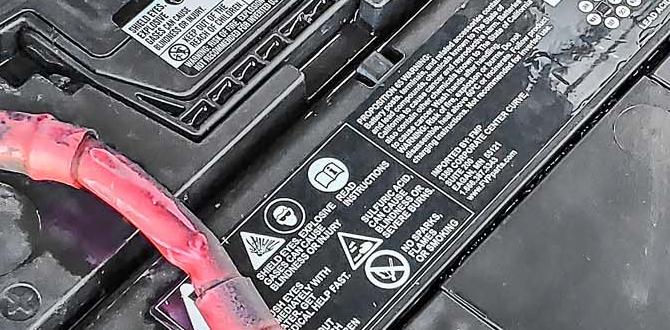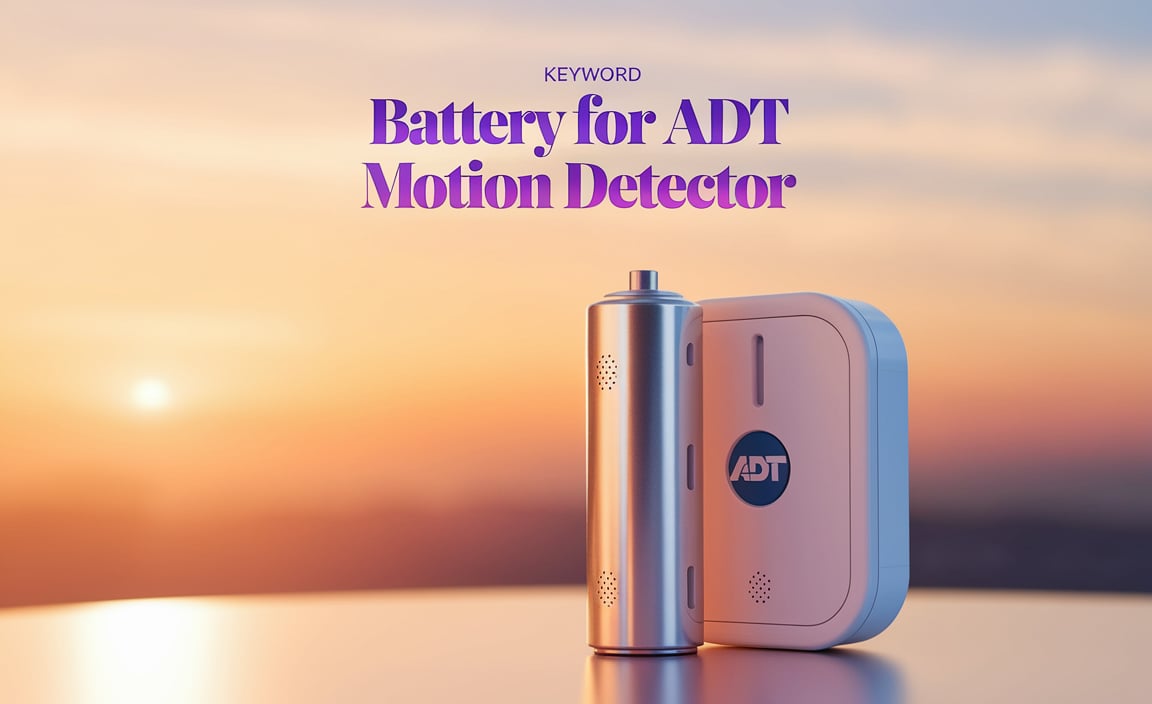Yes, a shower head adapter for a garden hose can let you easily connect your garden hose to your shower head to create a simple, functional outdoor shower or for various other handy uses.
Ever found yourself wishing for a quick outdoor shower on a hot day, or needing to rinse off muddy boots after gardening? Tying multiple hoses together or struggling with awkward setups can be a real pain. You’ve probably looked at that trusty garden hose and wondered, “Can I connect this to my shower head?” The good news is, yes, you often can! It’s a surprisingly simple fix with the right adapter. This guide will walk you through everything you need to know, from what adapters are available to how to pick the best one for your needs and set it up with confidence. Let’s make that outdoor rinse a breeze!
What is a Shower Head Adapter for a Garden Hose?
Think of an adapter as a trusty connector, similar to how a good plug connects your phone to its charger. It’s a small but mighty piece of hardware designed to bridge the gap between two different types of threaded connections. In this case, it allows you to connect the standard threaded end of a typical garden hose (which is usually a larger, “GHT” or Garden Hose Thread) to the threaded fitting on your shower head or shower arm (which is typically a smaller, “NPT” or National Pipe Thread, often 1/2 inch).
These adapters are usually made from durable materials like brass or stainless steel to withstand water pressure and varying temperatures. They come in different configurations, but their main job is to create a watertight seal so you can enjoy a steady flow of water where you need it, without leaks.
Why Use a Garden Hose with Your Shower Head?
The reasons for wanting to connect a garden hose to a shower head are diverse and practical. It’s not just about creating a makeshift outdoor shower, though that’s a popular use!
- Outdoor Showers: Rinse off after swimming, gardening, or exercising outdoors. It’s a great way to stay cool on hot days.
- Pet Washing: Give your furry friends a bath outside without making a mess indoors.
- Cleaning Equipment: Easily spray down muddy tools, bikes, patio furniture, or even your car.
- Rinsing Dipper Pools: A quick and easy way to fill or rinse small kiddie pools.
- Temporary Plumbing Needs: In some DIY projects or temporary setups, it can be a convenient water source.
The beauty of using a garden hose is its flexibility and length. You can reach different areas and set up your temporary shower or cleaning station wherever it’s most convenient. It’s about practical solutions for everyday needs.
Types of Shower Head Adapters for Garden Hoses
When you’re looking for the right adapter, you’ll notice a few variations. Understanding these will help you choose the one that fits your setup perfectly. The main differences lie in how they connect and what they adapt from and to.
1. Garden Hose Thread (GHT) to Shower Arm Thread (NPT) Adapters
This is the most common type you’ll encounter. Your garden hose typically has a male GHT fitting (the part with the raised threads you screw things onto). Your shower arm (the pipe coming out of the wall where the shower head attaches) usually has a female NPT fitting (the part with internal threads to receive a male fitting). So, you need an adapter that has:
- One end with female GHT threads to accept your male garden hose.
- One end with male NPT threads to screw into your shower arm.
This adapter effectively lets your garden hose “speak the same language” as your shower arm fitting.
2. Garden Hose Swivel Adapters
Some adapters include a swivel feature. This is incredibly useful because it allows the connection point to spin freely. Why is this a big deal? With a static connection, the garden hose can twist and kink, making it stiff and potentially annoying to work with. A swivel adapter prevents this twisting at the connection point, allowing the hose to move more freely and reducing strain on the connection itself. This makes your outdoor shower experience much more comfortable.
3. Adapters with Built-in Shut-off Valves
For added convenience, some adapters come with a small, integrated shut-off valve. This allows you to turn the water flow on and off directly at the connection point, right where the hose meets the shower arm. This is super handy because you don’t have to walk all the way back to the faucet to stop the water. It also helps prevent water hammer (that bang you sometimes hear in pipes) by allowing you to gradually stop the flow.
4. Shower Head Base Adapters
In some cases, you might not be connecting directly to the shower arm but rather to the base of the shower head itself, especially if you have a handheld shower head. These adapters function similarly, ensuring the correct thread types are matched. Always check the threading on your specific shower head or shower arm to be sure.
What You’ll Need: Tools and Materials
Setting up your garden hose shower is usually a straightforward process, and you won’t need a whole toolbox. Here’s what to have on hand:
Essential Items:
- Garden Hose: Make sure it’s in good condition, with no leaks.
- Shower Head Adapter: The correct type for your garden hose and shower arm/head.
- Shower Head: The one you’ll be using for the connection. It’s often easier if you remove the main shower head and connect the adapter directly to the shower arm for a fixed spray, or to the hose attachment point if using a handheld shower.
Helpful (but often not required) Tools:
- Adjustable Wrench or Pliers: For a snug, leak-free connection. Be careful not to overtighten and strip threads!
- Teflon Tape (Plumber’s Tape): This is a white, waxy tape that you wrap around the threads of the male fittings (like the shower arm threads) before screwing on the adapter or shower head. It helps create a watertight seal and makes it easier to take apart later. You can usually find this at any hardware store.
- Towel or Rag: To wipe up any drips.
Safety First: When dealing with plumbing, even simple connections, it’s always good practice to ensure surfaces are not slippery, especially if working outdoors.
Step-by-Step Guide: Connecting Your Garden Hose
Let’s get this connected! This guide assumes you’re adapting a standard garden hose to a standard shower arm. If you’re connecting to a handheld shower head hose, the process is very similar, just at the hose connection point.
Step 1: Turn Off the Water
Before you do anything, go to your main water shut-off valve for the shower or, if that’s not easily accessible, turn off the main water supply to your house. It’s always better to be safe and ensure no water is running while you’re disconnecting and reconnecting parts.
Step 2: Remove Your Existing Shower Head
Grip your current shower head firmly and gently try to unscrew it from the shower arm. Most shower heads unscrew counter-clockwise. If it’s tight, you can use an adjustable wrench, but wrap a rag around the connection point first to avoid scratching the finish. Once loose, unscrew it completely.
You should now see the threaded end of the shower arm. Check the threading on the shower arm; it’s typically a male (external) thread, usually 1/2 inch NPT size. This is what your adapter will need to connect to.
Step 3: Prepare the Shower Arm Threads (Optional but Recommended)
Take your roll of Teflon tape and wind it around the threads of the shower arm. Wrap it in a clockwise direction (the same direction you’ll be screwing things on). About 3-5 wraps is usually enough. This tape helps seal the threads and prevents leaks. It also makes it easier to unscrew components later if you ever need to.
You can find helpful resources on using Teflon tape from sites like This Old House, a reputable source for DIY home improvement tips.
Step 4: Attach the Adapter to the Shower Arm
Take your shower head adapter and screw the end with the male NPT threads onto the shower arm. Again, tighten it by hand first. If it feels loose or you want to ensure a good seal, use your adjustable wrench or pliers to give it a final snug turn (about a quarter to a half turn past hand-tight is usually sufficient). Remember, don’t overtighten, as this can damage the threads or the adapter.
Step 5: Connect the Garden Hose
Now, take your garden hose. The standard garden hose usually has a female fitting (the part with the internal threads that screws onto spigots and, in this case, your adapter). Screw the end of your garden hose onto the female GHT end of the adapter. Hand-tighten this connection securely.
Pro Tip: Some garden hose connections have a rubber washer inside the female end. Make sure this washer is present and seated correctly; it’s crucial for preventing leaks!
Step 6: Check for Leaks and Test
Slowly turn the water supply back on to the shower. Check both connection points carefully – where the adapter meets the shower arm, and where the garden hose meets the adapter. Look and feel for any drips.
If you see leaks:
- Turn off the water again.
- Slightly tighten the leaking connection.
- If it still leaks, you might need to remove the adapter or hose, reapply Teflon tape to the shower arm threads, and re-attach everything, making sure it’s snug but not forced.
Once you’re confident there are no leaks, you can turn the water on fully and test your new outdoor shower or rinsing station!
Choosing the Right Garden Hose Adapter: Key Considerations
Not all adapters are created equal, and picking the right one ensures a smooth setup and reliable performance. Here’s what to keep in mind:
1. Thread Compatibility
This is the most critical factor. You need to know the thread type and size of both your garden hose and your shower connection. As mentioned, garden hoses are usually GHT (Garden Hose Thread), and shower arms/heads are typically NPT (National Pipe Thread), most commonly 1/2 inch.
Most adapters are designed to connect GHT to 1/2 inch NPT. However, it’s always worth double-checking your specific fittings. You can often find this information by looking at the product descriptions online or by visiting a local hardware store where you can even bring your garden hose end to test fit.
2. Material Durability
Look for adapters made from brass or stainless steel. These materials are resistant to rust and corrosion, which is important since they’ll be in contact with water. Plastic adapters can work, but they might not be as long-lasting or capable of handling higher water pressures.
Brass is a common choice because it’s durable, relatively inexpensive, and corrosion-resistant. Stainless steel offers even greater strength and corrosion resistance but can be more costly.
3. Swivel vs. Fixed Connection
As discussed, a swivel connection can significantly improve the usability of your setup by preventing the hose from twisting. If you plan to spend a lot of time using it or want maximum flexibility, a swivel adapter is a great investment.
4. Built-in Shut-off Valve
If you value convenience, an adapter with a built-in shut-off valve is a handy feature. It allows for quick water control without needing to reach the faucet, and it can help reduce the jarring effect of sudden water stops.
5. Brand Reputation and Reviews
When in doubt, check reviews! See what other users are saying about the adapter’s performance, ease of installation, and durability. Reputable brands often offer better quality and customer support.
Maintenance and Troubleshooting
Like any connection, your garden hose shower setup might need a little attention now and then. Here’s how to keep it running smoothly and what to do if issues pop up.
Regular Checks
- Inspect Connections: Periodically check the points where the garden hose connects to the adapter and the adapter connects to the shower arm. Ensure they are still snug and free from visible damage.
- Check the Hose: Make sure your garden hose itself doesn’t have any leaks or kinks that could reduce water flow or create stress on the connections.
- Look for Corrosion: If you live in an area with hard water or high humidity, keep an eye out for any signs of corrosion, especially on metal fittings.
Common Issues and Solutions
1. Leaking Connections:
- Cause: Loose connection, missing or damaged rubber washer in the garden hose fitting, insufficient Teflon tape on shower arm threads.
- Solution: Try tightening the connection first (hand-tight plus a quarter turn with a wrench). If that doesn’t work, disassemble the connection, check/replace the rubber washer, reapply Teflon tape to shower arm threads (3-5 wraps, clockwise), and reassemble, ensuring it’s snug. For leaks at the shower arm, ensure the adapter’s NPT threads are properly seated and sealed.
2. Reduced Water Flow:
- Cause: Kink in the garden hose, debris lodged in the adapter or garden hose fitting, low water pressure from the source.
- Solution: Straighten any kinks in the hose. You can try flushing the hose and adapter by temporarily disconnecting the hose from the adapter and letting water run through the shower arm for a minute. Check the rubber washer in the hose fitting for debris. Ensure your main water source is providing adequate pressure.
3. Difficulty Unscrewing:
- Cause: Overtightening, corrosion, or mineral buildup.
- Solution: Apply a penetrating lubricant (like WD-40) to the threads and let it sit for a few minutes. Use a wrench with a rag to protect the finish, and try to unscrew it gently. If it’s still very stubborn, professional help might be needed to avoid damaging the shower arm or wall.
Winterizing
If you live in a region that experiences freezing temperatures, it’s crucial to disconnect your garden hose and adapter and drain them completely before winter to prevent frozen water from expanding and cracking the fittings or hose. Store them indoors.
Frequently Asked Questions (FAQ)
Q1: Will this work with any garden hose?
A1: Typically, yes. Most standard garden hoses use a GHT (Garden Hose Thread) fitting. The adapter is designed to connect to this standard fitting. Always check the adapter’s description to confirm it’s made for standard garden hoses.
Q2: What are the common thread sizes for shower arms and garden hoses?
A2: Garden hoses almost always use GHT (Garden Hose Thread), which is a specific thread size. Shower arms and shower heads commonly use NPT (National Pipe Thread) fittings, with 1/2 inch NPT being the most prevalent size for shower arms. An adapter bridges these two types.
Q3: Do I need plumber’s tape?
A3: It is highly recommended, especially for the connection to the shower arm (the NPT threads). Plumber’s tape (Teflon tape) creates a seal that prevents leaks and makes it easier to disassemble later. It’s a small step that makes a big difference.
Q4: Can I leave the adapter connected permanently?
A4: While you can, it’s often best to disconnect the garden hose when not in use. This reduces the risk of accidental water sprays, protects the connections from the elements, and prevents potential issues if the water pressure were to fluctuate unexpectedly. If you live in a freezing climate, disconnecting is essential for winterization.
Q5: What if my shower head is a handheld one?
A5: If you have a handheld shower head connected by a flexible hose, you’ll typically connect the adapter to the end of that hose where it screws onto the shower arm or a diverter. The adapter will then connect your garden hose to that point, allowing you to use the garden hose as the water supply for your handheld shower head.
Q6: Can I use this for hot water?
A6: Standard rubber garden hoses are typically rated for cold water only and can degrade or become unsafe with prolonged exposure to hot water. While some adapters might connect to your hot water line, using a standard garden hose with hot water is generally not recommended for safety and hose longevity. Adapters are best used for cold water outdoor showers or rinsing purposes.
<p



